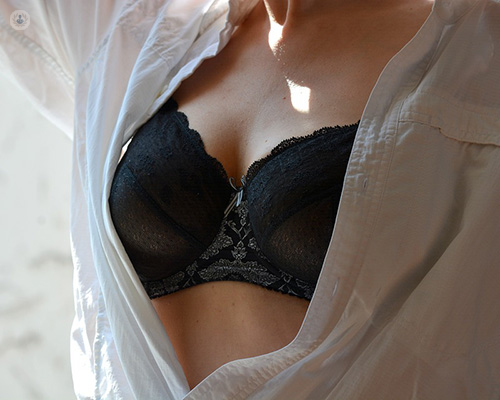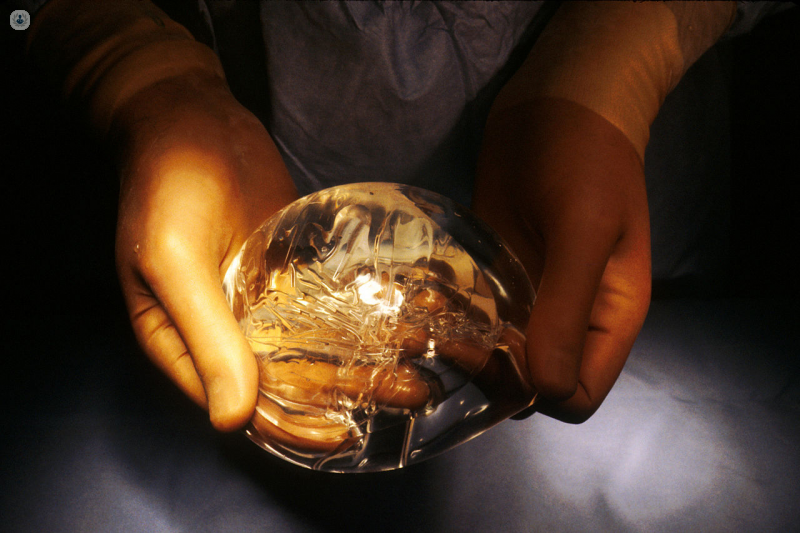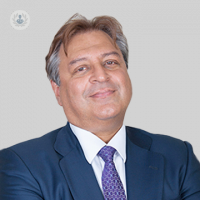Breast implants: how long do they last?
Escrito por:If you have been or are currently considering having a breast augmentation, you may be wondering whether or not the breast implants have a shelf life, and if they need to be replaced years later. We spoke to highly experienced plastic and cosmetic surgeon, Mr Tariq Ahmad, to get his expert opinion with regards to how long implants tend to last. The experienced surgeon also tells us what you can expect if you choose him to be your surgeon, and what happens during recovery from breast surgery.

Do breast implants have a lifespan?
Breast implants, like any implant placed in the body, cannot be guaranteed to last a lifetime. Although the woman who had the first ever breast implant (placed in 1962) still has the same set of implants in place today, they are not perfect and have caused quite a few problems.
Therefore, it is important to bear in mind that having breast augmentation is likely to mean that further surgery will very likely need to be performed at some point in the future. The most common recommendation is that implants should be replaced after ten years.
Implant manufacturers vary slightly in relation to how long they offer a warranty for with their implants. This can last anywhere from 10 years all the way up to a lifetime warranty. You should discuss this with your surgeon. Some offer financial support for further surgery should the implant prove defective. Thus, it is important that you are aware of the guarantees for your implant prior to deciding on the implant.

Can you detail your experience in relation to breast implants?
I have been undertaking breast implant surgery independently since the early 1990s, so I have seen the changes with each generation of breast implant. I have used many types of implant and have tried many of the different techniques associated with implant placement. I have seen first-hand what can happen to patients after surgery in the short, medium but particularly in the long run.
The best of the latest implants allows me to tailor the size and shape of the implant specifically for each patient, influenced by what they discuss and state as their desire for the shape and size of their breasts to be.
You can be reassured that my team and I will incorporate my knowledge and experience to support you right through the process, all the way from the initial consultation, decision making and surgery, but also right through until you have completed your healing process.
What happens during recovery from breast augmentation?
The first aspect of post-operative care and recovery is to prevent potential problems towards the end of the procedure. There are commonly two main concerns: bleeding and infection. I have not used drains in breast surgery for over 15 years and have not once regretted that decision.
In relation to augmentation, at the end of the operation, I place some antibiotic and local anaesthetic into the wound. This is a boon for pain relief, particularly so if the implant is under the muscle. A comfortable patient in recovery is a stable patient who is then unlikely to suffer any further problems such as bleeding. You will normally receive a dose of antibiotic during the operation and you will also receive two more doses of post-operative antibiotic whilst in hospital.

Would you recommend a dressing?
Over the years, I have found that less is certainly more. Obviously, the breasts need support and this can vary a little depending on the quality and volume of tissues as well as implant shape or size.
You will need a support bra, similar to a maternity bar, to take the weight off the breasts. This will support them during the healing process. The wound itself will be dressed with sterile tapes and something absorbent in case there is oozing. If all goes well, the tapes can be peeled away after one to three weeks have passed. This is when the wound should be sealed, and then, only the support bra is needed.

Post-operative care
Postoperatively, activity should be limited, but not completely, avoiding heavy lifting and excessive pectoral chest muscle use. This can be inadvertent, for example, when sitting up using one hand to push up.
Patients need to be taught (before going home) how to get out of bed without chest muscle use by swinging the legs over the edge and, ideally, with some assistance. You will need to try to sleep on your back and to avoid sleeping on the side or on your front. Pillows can be used to facilitate this.
The wounds will be checked, usually by one of our plastic nurses, generally after a week has passed. I normally see my patients after discharge of two to three weeks, then again at six and again at 12 weeks. Thereafter, review is optional, but my patients are offered up to five follow-up appointments, included as part of their post-operative care package.
A support bra that is comfortable and does not cut in needs to be used for six weeks. Light exercise is recommended from six weeks, increasing gradually to full levels after 12 weeks have passed.
If you are considering breast augmentation and would like help in determining which implants are for you, read our article on how to choose the correct breast implants here, and book an appointment to see Mr Ahmad now by clicking here.


